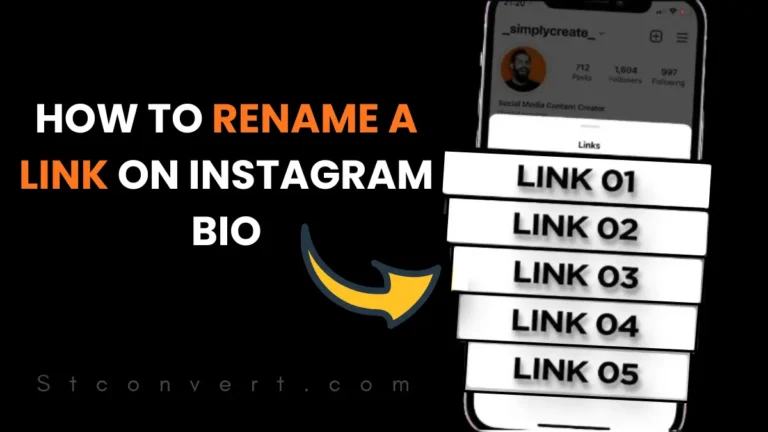The world of marketing is changing rapidly. One moment, print news is popular, and the next, everything goes digital. The marketers who do the best work are the ones who stay up to date with the latest trends and news. The industry is competitive, and things move quickly.
Nowadays, media is readily available, at our fingertips. So why don’t many of us keep up with it? It could be because we feel comfortable in our jobs or because after a long day, reading marketing news seems like too much. For students, with so many assignments and homework, it can be even more difficult. Reading another blog post may seem like the last thing you want to do.
While it can be challenging, it’s important to stay informed. Following news and trends helps you better understand the industry, improve your skills, and stay ahead of the curve in a fast-moving marketing environment.
1. Moving towards total video
In the past few years, smart TVs have become commonplace, and viewers are now switching between live TV and streaming, but there is no significant difference. While broadcast TV still reaches many people, almost half of people now say they watch mostly via streaming. For marketers, this mix makes ad planning more difficult.
The best approach is balance. Viewer habits vary across countries and age groups. Some still prefer regular TV, while others prefer subscription or ad-based streaming. Marketers who adjust to these patterns will perform better in 2025.
Many plan to reduce spending on broadcast TV, yet are increasing their investment in streaming. Finding the right mix between the two will be key to strong results.
2. Social media needs a new energy
Marketers are now focusing more on real attention – not just views, but on engagement. Today, fewer people say that social media ads capture their attention than they did last year. This decline affects all age groups, not just younger users.
To stand out in 2025, brands must come up with creative, compelling ideas. What works changes – older audiences enjoy humor, Gen Y prefer humor and music, while Gen Z connect most with music. Creative storytelling and visual appeal will determine what captures attention.
3. Generative AI needs to build trust
Generative AI is growing rapidly, but many marketers are unsure how to use it safely. Most are excited about AI, but some worry about a lack of skills and unclear data sources.
Marketers need to trust that the data behind AI tools is accurate and reliable. Transparency will become even more important in 2025, for both brands and consumers who want to know how AI is being used in ads.
4. Sustainability and marketing must work together
As more countries introduce new sustainability laws, brands will need to act quickly. Most people say they want to live sustainably, but many brands still fail to link this to real action.
Sustainability already adds huge value to global brands, and its importance continues to grow. In 2025, marketers will treat it as part of the business, not just a campaign. As PepsiCo’s Jen Wakely says, marketing must help make sustainability real for people – and turn it into long-term growth.
5. Brands Connect Through Creator Communities
Communities are evolving in new ways. Today, creators are building these groups and gaining trust faster than brands. According to Goldman Sachs, the creator economy was worth about $250 billion in 2024 and could grow to $480 billion by 2027.
Creator-led groups have real influence on topics like travel, beauty, fitness, or parenting. They help brands reach people naturally and build stronger relationships. Kantar’s Creator Digest shows that creator-led content performs 4.8 times better in brand differentiation in the U.S. In 2025, creators with authentic voices will be key for brands to connect and build trust.
Brands should work hand in hand with creators and align content with their broader goals. Not every creator is after a quick buck; Experience and long-term value are also important. Understanding how creators think and develop helps platforms grow users and drive ad revenue.
6. Inclusion as a real growth driver
Inclusion is no longer a side note — it’s now a core business factor. Kantar’s Brand Inclusion Index 2024 shows that nearly 8 in 10 people consider diversity and inclusion when choosing brands, especially Gen Z, millennials, and communities with special needs.
In developing regions, 89% value inclusion, compared to 71% in developed regions. UN data says that by 2050, 1 in 4 people will be African, giving brands the opportunity to connect with a wider, more diverse audience.
In 2025, inclusion will no longer be just a checkbox. It will be a way for brands to grow and build lasting trust with people.
7. The challenge of slowing population growth
Global population growth is slowing, now below 1% per year and expected to slow further by the end of the century. Fewer people mean fewer new shoppers, which could limit category growth.
Kantar data shows that brands grow 5 times faster as their categories grow. But trends such as later marriages, fewer children and smaller homes mean spending patterns are changing.
To stay ahead, brands must focus on three things: reaching more people, staying visible and finding new growth areas – whether that’s through innovation, niche audiences or premium offers.
8. Pushing the boundaries of innovation
More brands are now finding new ways to grow through innovation. Companies like Oreo and Ferrero are expanding into ice cream to reach new customers, while Oral B is looking for more ways to increase its role in personal care. On a larger scale, Samsung has moved beyond electronics by opening convenience stores in the US. In 2025, more brands will continue to push their boundaries to enter new markets.
For big brands, innovation-driven growth is important but also risky. A clear view of the market and opportunity is essential to move forward in new areas. As seen in our Brand Growth Blueprint, companies that explore new spaces have twice the opportunity to grow. Strong brands with future potential can redefine their purpose and enter new spaces to unlock fresh revenue streams.
9. The Next Phase of Retail Media Networks
Retail Media Networks (RMNs) are changing how brands connect with consumers. These digital advertising platforms, run by retailers, help brands reach targeted audiences through personalized ads across apps, websites, and in-store screens.
By 2028, retail media is expected to account for nearly 25% of U.S. advertising spend. By leveraging retailer data, brands can improve targeting and campaign performance. By 2025, RMNs will serve as full-funnel marketing tools, not just short-term options for CPG brands. Nearly 41% of global marketers plan to increase RMN spend in the coming year.
To maximize results, brands should:
• Work closely with retailers to analyze first-party data.
• Match creative content to specific customer segments.
• Challenges such as limited data access, media measurement and timelines must be addressed.
10. Livestreaming: Stronger than ever
Livestreaming has changed the way people shop and engage with brands, especially in China. Platforms like Taobao Live, Douyin and WeChat reach millions of people for both entertainment and shopping. McKinsey predicts that live commerce will account for 20% of China’s retail sales by 2026, led by Gen Z and millennials.
Good livestream hosts tell compelling stories that build trust and keep shoppers coming back. Kantar studies show that livestream ads help drive both short-term sales and long-term brand love. Big brands should focus on long-term value, while smaller brands should focus on awareness and quick interest.
Social commerce is also helping smaller brands grow quickly – like Made by Michelle, which sold $1 million in 12 hours on its TikTok shop. While livestreaming is best suited for fast-selling products, it’s also proving effective for larger industries like cars and fashion.







